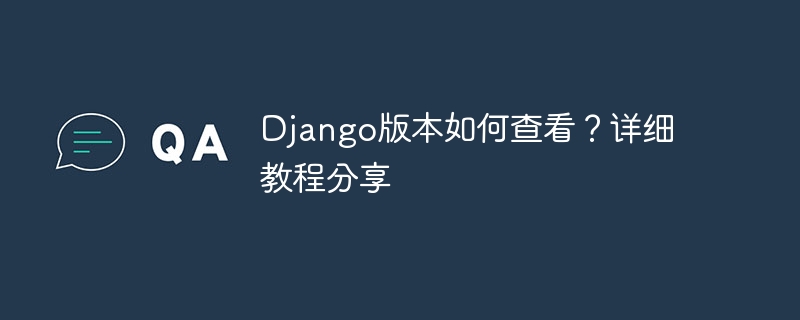

How to check the Django version? Detailed tutorial sharing, specific code examples are required
Django is a popular and powerful Python web framework with the characteristics of rapid development, strong security and scalability. When learning and using Django, it is important to know which version of Django you are using. Because different versions of Django may have some differences and new features, you need to choose appropriate methods and techniques according to the version during the development process.
Next, I will introduce how to check the Django version and share some specific code examples.
Use the command line to view the Django version
Enter the following command in the terminal or command line to view the currently installed Django version:
$ python -m django --version
This command will output the current The installed Django version number, such as "3.2.5".
View Django version using Python code
If you are operating in Python's interactive interpreter, you can use the following code to view the Django version:
import django print(django.get_version())
Run The above code will output the currently installed Django version number.
View Django version in Django project
If you are in a Django project, you can view the Django version in the project through the following code:
import django print(django.get_version())
You can The above code is placed anywhere in the project, such as in the settings.py file. When running the project, this code will output the Django version number used by the current project.
In addition to checking the Django version through the command line and Python code, you can also check the declared Django version in the project's requirements.txt or Pipfile file. These files are usually located in the root directory of the project, and you can view the specific version number of Django installed.
The following is an example requirements.txt file:
Django==3.2.5
By looking at the Django version number in this file, you can determine the Django version used by the current project.
It is worth mentioning that if you want to install a specific version of Django, you can use the following command:
$ pip install django==3.2.5
In this way, you can install the specified version of Django.
Summary:
When learning and using Django, it is very important to check the Django version being used. The article shares how to check the Django version through the command line, Python code, and project files, and gives specific code examples. I hope this article will help everyone understand and use Django.
The above is the detailed content of How to check Django version? Complete tutorial interpretation. For more information, please follow other related articles on the PHP Chinese website!
 How to turn off win10 upgrade prompt
How to turn off win10 upgrade prompt
 The difference between lightweight application servers and cloud servers
The difference between lightweight application servers and cloud servers
 CMD close port command
CMD close port command
 The difference between external screen and internal screen broken
The difference between external screen and internal screen broken
 How to jump with parameters in vue.js
How to jump with parameters in vue.js
 Cell sum
Cell sum
 How to intercept harassing calls
How to intercept harassing calls
 virtual digital currency
virtual digital currency




